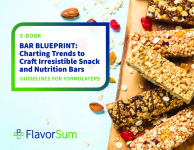Endurance ingredient for bread
seed rich in omega-3 fatty acids could soon be a novel food in
Europe.
Once valued so highly that it was used as a currency, an ancient seed of South America rich in omega-3 fatty acids could soon be a novel food in Europe.
The UK Food Standards Agency (FSA) has received an application from Irish company R Craig & Sons to approve whole and ground chia seed as a new or novel food.
Used for centuries by the Aztecs and native Indians of Mexico, chia (Salvia hispanica L ) is a summer annual herbaceous plant belonging to the mint family that has been rarely used in Europe.
The seeds of the plant - targeted for use in bread - provide a source of the omega-3 polyunsaturated fatty acid, alpha-linolenic acid.
Author William Anderson writes that Aztec warriors subsisted on the chia seed during their conquests - for endurance. If you try mixing a spoonful of chia in a glass of water and leaving it for about 30 minutes, when you return the glass will appear to contain neither seeds nor water but an almost solid gelatin. This gel-forming reaction is due to the soluble fibre in the chia.
Researchers believe this same gel-forming phenomenon takes place in the stomach when food containing these gummy fibres, known as mucilages, are eaten.
The gel that is formed in the stomach creates a physical barrier between carbohydrates and the digestive enzymes that break them down, thereby slowing the conversion of carbohydrates into sugar.
For Anderson, chia seeds are the 'definitive hydrophilic colloid for the 21st century diet'.
As a source of protein, chia is digested and absorbed easily. In addition, the seeds are a signficant source of the essential omega-3 fatty acid - demanded by the body to help emulsify and absorb fat-soluble vitamins A,D, E, and K. The seeds are rich in unsaturated fatty acid linoleic - important for respiration of vital organs - which the body cannot manufacture.
Today, chia seeds are being grown in Argentina and Peru, but can not be cultivated in Europe because the plant needs sub-tropical conditions to grow.
Before any new food product can be introduced on the European market it must be subjected to a thorough assessment - carried out under the provisions of Regulation (EC) No 258/97 concerning novel foods and novel food ingredients.
An initial discussion of this application by the Advisory Committee on Novel Foods and Processes (ACNFP) will take place at the Committee's meeting on 16 July 2003. Any comments on this application should be sent to the ACNFP Secretariat by 25 July 2003 and will be passed to the Committee before it finalises its opinion on this novel food.











